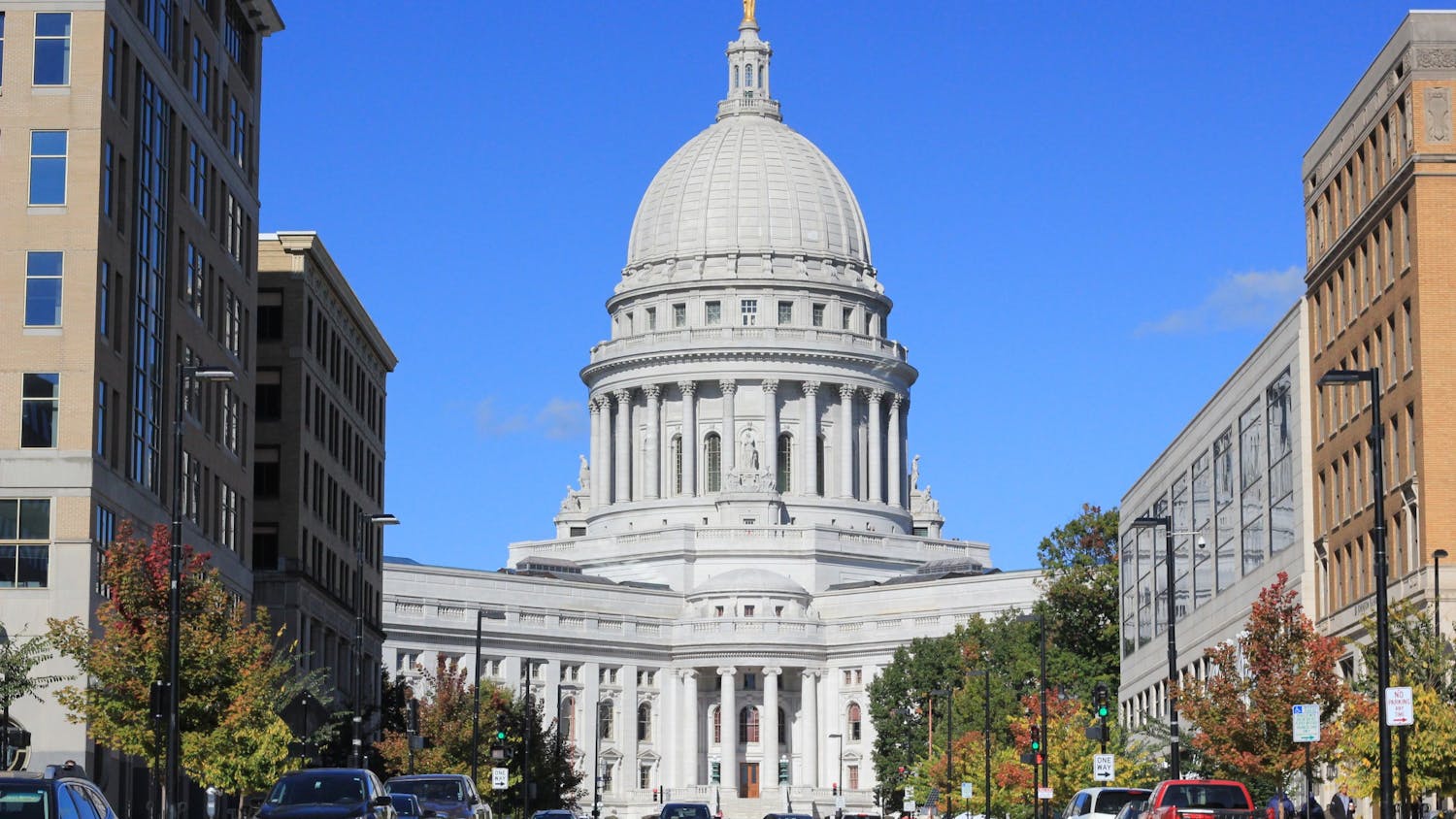There are many unique things about the city of Madison, located in the southern central part of Wisconsin on unseated Ho-Chunk territory. Beyond its rich local music scene and characteristic dining (cheese curds galore!) Madison is situated on a geographically unique piece of land — the Isthmus, a thin strip running between Lakes Mendota and Monona. The only other major US city built on an isthmus is Seattle, WA.
Isthmuses form in a variety of ways, often by tectonic plate movements or volcanic activity. Madison, however, is not near a fault line, nor are we near any volcanoes (tragically). So what formed this beloved land? And what did it look like without its signature waterways?
Many millions of years ago, the land around Madison was markedly different. The earliest recorded Wisconsin fossils come from the Precambrian era, and there are massive volumes of Cambrian era fossils. These fossils are marine in nature, reflecting Wisconsin's landscape at the time. The state was covered in water, home to creatures like trilobites and gastropods — commonly known as snails and slugs — that occupied the shallow inland sea that the state was sinking into.
Slowly, Wisconsin emerged from the sea, though other bodies of water would periodically advance and retreat over the land until about 400 million years ago. The state was then shaped by erosion until the advance of the next Ice Age.
Like much of Wisconsin, the land around Madison was shaped by glaciation, or the slow movement of masses of ice over the land. During glaciation, glaciers carve out depressions in the land. Often these depressions are then filled with water from the retreating icebergs. The Wisconsin glaciation, which was the most recent north american glacial period, occurred between 75,000 and 11,000 years ago.
Though plant and animal life was scarce during the Ice Age due to much of the landmass being covered by the glacier, it was not completely absent. Mammoths tramped across the tundra, feeding on the grasses.
It was during the Wisconsin glaciation that Lakes Mendota and Monona were formed, though they and the other lakes of the region were once one massive lake that stretched from the Northern shore of Mendota all the way down to Stoughton.
This one massive lake, which existed for a span of about 1000 years, eventually split into multiple smaller lakes because of falling water levels, leaving behind Mendota, Monona, Kegonsa, Waubesa and the iconic isthmus.
The first people known to have occupied the isthmus were the indigenous mound-builders, who shaped the land by building elaborate burial and effigy mounds across the region. These people are considered by many to be direct ancestors of the Ho-Chunk people, who lived in the Teejop, now known as the Four Lakes region, until they were forced out by white settlers.
The isthmus is now home to Wisconsin’s Capitol building. However, Madison was not the original seat of the state capitol. Judge and land speculator James Doty, for whom Doty street is named, toured the area in 1829 and became so enamored with the land that he purchased much of it, eventually persuading the territorial legislature to make this place the new capital in 1836.
Doty named the new city for James Madison, and the very next year, the first white settlers moved in, eventually forcing the native Ho-Chunk out, though indigenous people camped along the lakes into the 1940s.
Some geologists have begun referring to our current epoch as the Anthropocene. The Anthropocene is marked by significant human impact on Earth’s geology and climate, such as anthropogenic climate change. Madison has not escaped the symptoms of the Anthropocene — as it sits on an ever-changing landform, the Madison we know today is complex and evolving. Our isthmus is home to a growing population of students and locals from all corners of the globe, each of whom contributes to the cultural, historical and environmental evolution of Teejop.
Much of the anthropogenic change up until now has been negative. Wild rice is threatened by pollution and the majority of the mound-builder’s effigies have been destroyed. However, Madison has always been home to those most willing to make a difference in their community, and, in geological time scales, the Anthropocene has only just begun.





